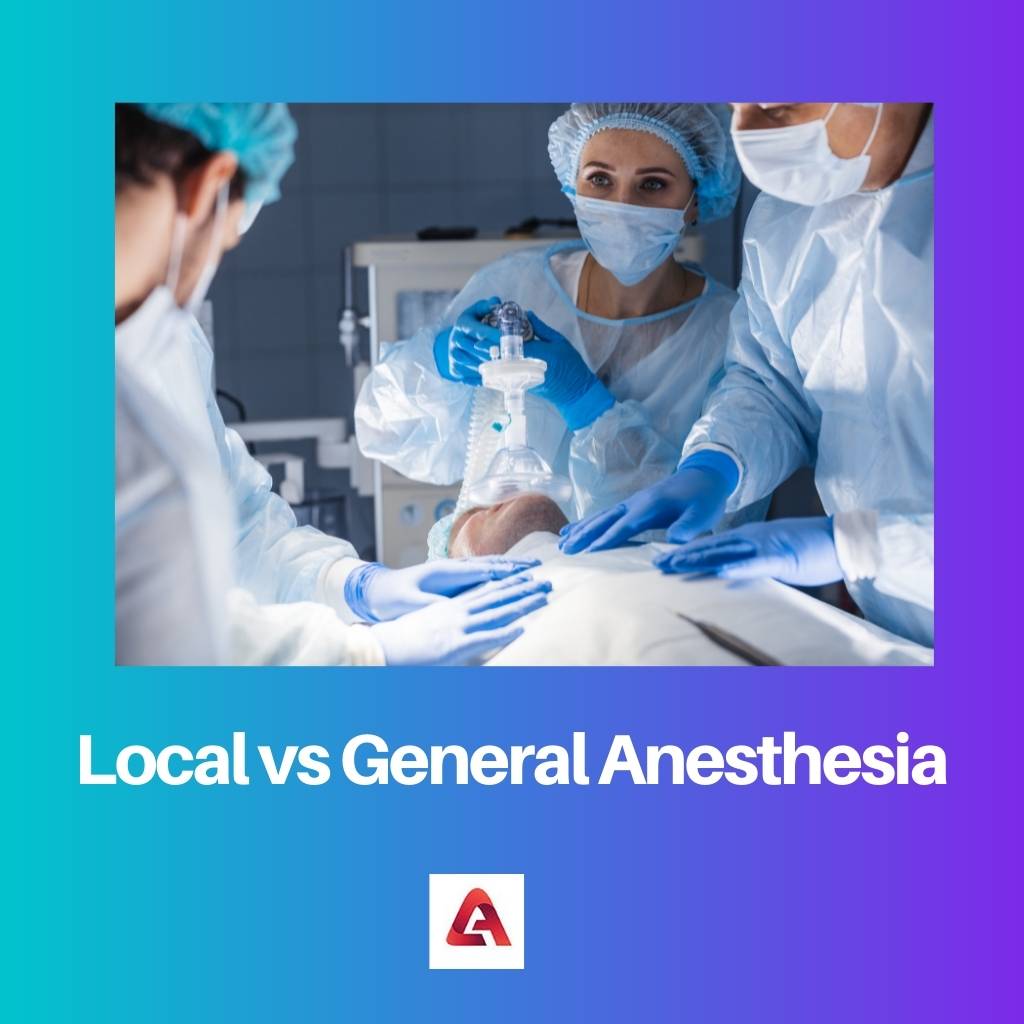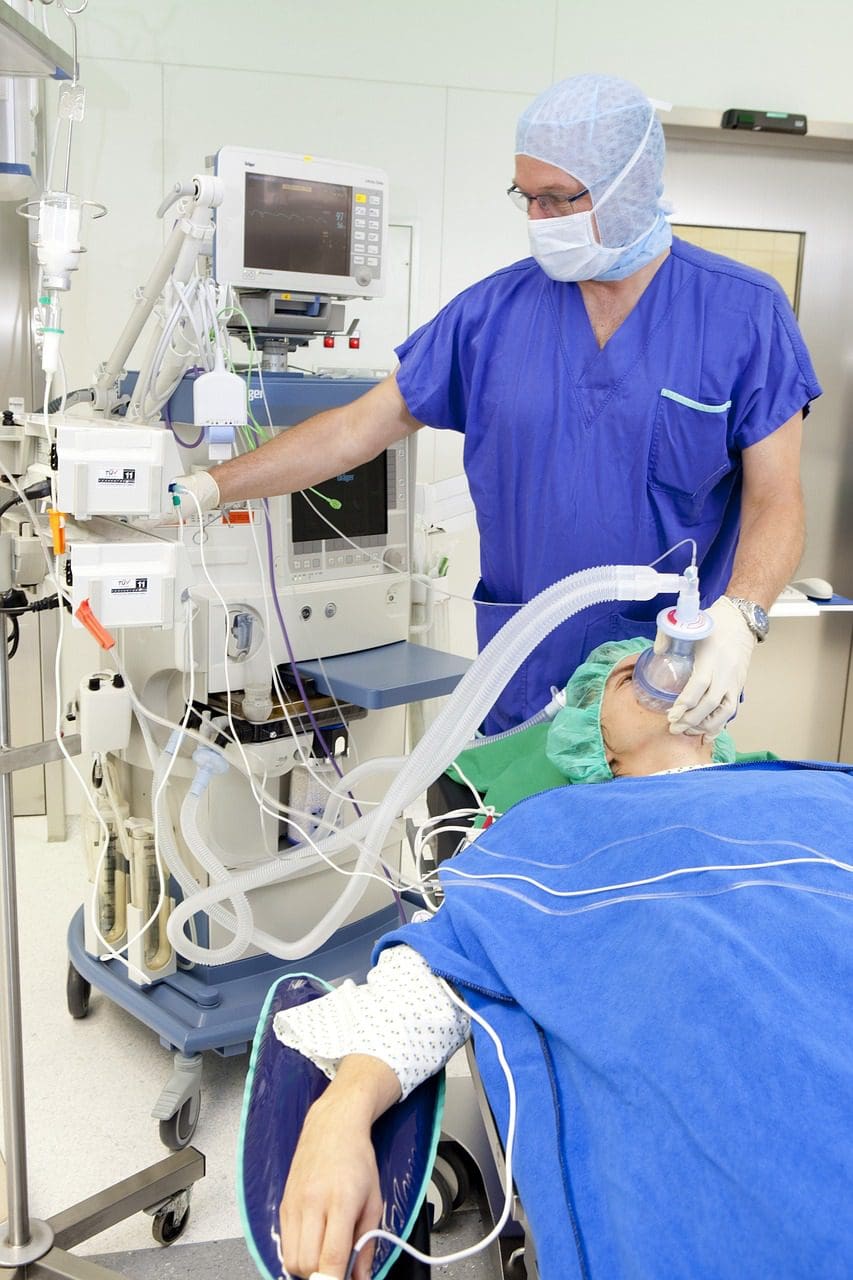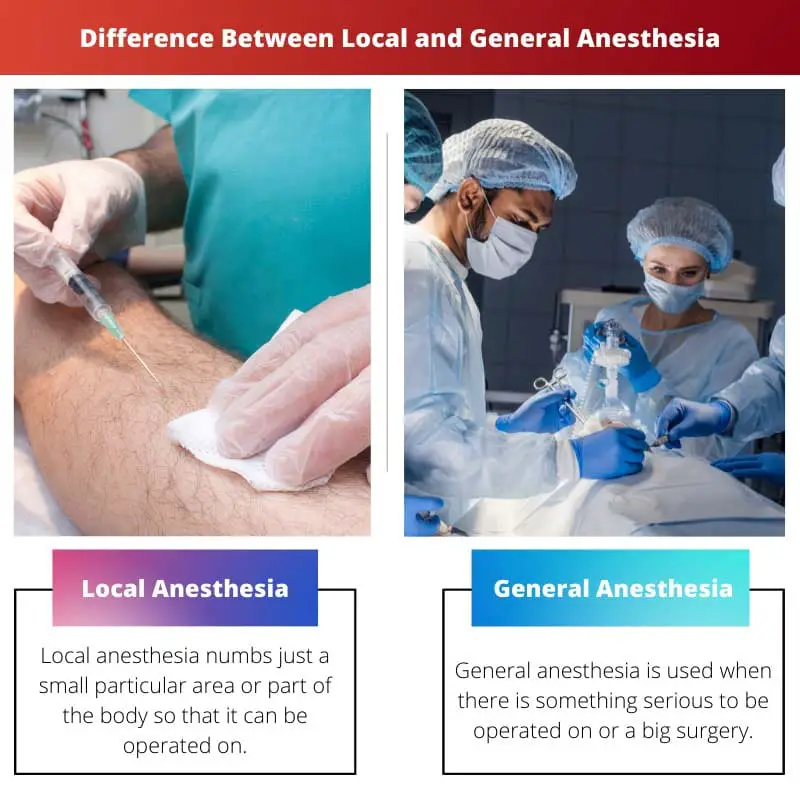Anaesthesia can be of many different types.
One is the injection of local anaesthesia that is used to numb just one particular area like a finger or tooth; another is general anaesthesia which, when given, causes the loss of consciousness for a limited period of time.
These anaesthesia are provided by specialist doctors who are anaesthetics that are also supported by a team of nurses and resident surgeons apart from the local anaesthesia as it can be provided by anyone.
In simpler and more convenient words, anaesthesia could be defined as a loss of sensations.
Key Takeaways
- Local anesthesia numbs a specific area, allowing patients to stay awake during minor procedures.
- General anesthesia induces unconsciousness for major surgeries, ensuring patients feel no pain.
- Recovery time for local anesthesia is shorter, with fewer side effects than general anesthesia.
Local vs General Anesthesia
Local anaesthesia is a type of anaesthesia that numbs a small part of the body without affecting consciousness. It is administered through an injection or topical application of an anaesthetic medication. General anaesthesia is a type of anaesthesia that affects the entire body and causes the patient to lose consciousness. It is administered through an intravenous injection or inhalation of an anaesthetic gas.

Local anaesthesia numbs just a small particular area or part of the body so that it can be operated on. Generally, it is used when the nerves of that part are easy to reach via some drops, ointments, sprays, or even injections.
During this procedure, after the injection of local anaesthesia, you stay conscious, but that area is free from pain as that has been numbed.
General anaesthesia is used when there is something serious to be operated on or a big surgery.
After the general anaesthesia, the patient undergoes total unconsciousness, during which they feel nothing and wakes up after a period of time. In fact, when you are anaesthetized, you will have literally zero memory of that time.
Comparison Table
| Parameters of Comparison | Local Anesthesia | General Anesthesia |
|---|---|---|
| What are they | Local anesthesia numbs just a small particular area or part of the body so that it can be operated on. | General anesthesia is used when there is something serious to be operated on or a big surgery. |
| Numbness | Local anesthesia numbs a particular part of the body that has to be operated on. | General anesthesia numbs the whole body making the patient unconscious. |
| Examples | Tooth removal, surgery for an ingrowing toenail that occurs with people, and some minor eye surgeries. | Operating in the heart, lungs, and abdomen, and the most important ones in the brain. |
| Ways of injection | It can be injected via ointments, sprays, or injections. | General anesthesia is injected in two ways. One is injecting the anesthetic medicine through the veins, and the other is anesthetic gas that can be smelled by the person. |
| Effects | It numbs a particular portion of the body for some time. | The patient loses consciousness for some period of time. |
What is Local Anesthesia?
Local anaesthesia numbs just a small particular area or part of the body so that it can be operated on. Generally, it is used when the nerves of that part are easy to reach via some drops, ointments, sprays, or even injections.
During this procedure, after the injection of local anaesthesia, you stay conscious, but that area is free from pain as that has been numbed.
Some common examples of surgeries where local anaesthesia is used are tooth removal, surgery for an ingrowing toenail that occurs in people, and some minor eye surgeries.
Here, total unconsciousness of the patient is not required, and the surgery can be done by just numbing that particular portion of the body.
Local anaesthesia numbs that portion so that the patient does not feel any pain during the whole process.

What is General Anesthesia?
General anaesthesia is used when there is something serious to be operated on or a big surgery.
After the general anaesthesia, the patient undergoes total unconsciousness, during which they feel nothing and wakes up after a period of time. In fact, when you are anaesthetized, you will have literally zero memory of that time.
General anaesthesia is used in a wide range of surgeries while operating in the heart, lungs, and abdomen, and the most important ones in the brain. There are two different ways of giving general anaesthesia to someone.
One is injecting the anaesthetic medicine through the veins, and the other is anaesthetic gas that can be smelled by the person.
The anaesthetic medicine temporarily stops the brain from responding to any outside message travelling from the veins of the body.

Main Differences Between Local and General Anesthesia
- The main difference between local and general anaesthesia is that local anaesthesia numbs just a small particular area or part of the body so that it can be operated on, while General anaesthesia is used when there is something serious to be operated on or a big surgery.
- Local anaesthesia numbs a particular part of the body that has to be operated on, but General anaesthesia numbs the whole body making the patient unconscious.
- Examples of surgeries where local anaesthesia is used are tooth removal, surgery for an ingrowing toenail that occurs in people, and some minor eye surgeries. Examples, where general anaesthesia is used, are operating in the heart, lungs, abdomen and, most important, in the brain.
- Local anaesthesia can be injected via ointments, sprays, or injections, while General anaesthesia is injected in two ways. One is injecting the anaesthetic medicine through the veins, and the other is anesthetic gas that can be smelled by the person.
- Local anaesthesia numbs a particular portion of the body for some time, while in general anaesthesia, the patient loses consciousness for some period of time.

- https://www.nejm.org/doi/pdf/10.1056/NEJM197205042861805
- https://ehp.niehs.nih.gov/doi/abs/10.1289/ehp.9087199